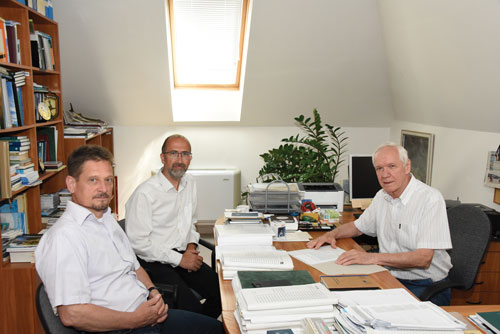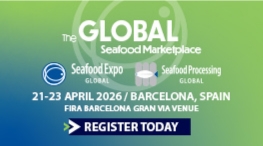This article was featured in Eurofish Magazine 5 2025.
Hungarian aquaculture research institutions and pond fish farmers are collaborating to make the sector more productive and more resilient to the impacts of climate change. The partnership has resulted in innovations along the supply chain.
Innovation in Hungarian pond aquaculture finds its institutional heart in HUNATiP, the Hungarian Aquaculture Technology and Innovation Platform. Established as a mirror platform for the European Aquaculture Technology and Innovation Platform (EATiP), HUNATiP supports the coordination of national innovation programmes, facilitating research and technology transfer among scientists, producers and innovators. As Dr László Váradi, president of HUNATiP, emphasises, innovation is vital if aquaculture is to remain sustainable and competitive in a rapidly changing world. HUNATiP’s role in organising forums, workshops, and information exchange underscores this ambition. The innovation HUNATiP fosters addresses multiple dimensions of pond aquaculture. First, productivity: encouraging better feeding strategies, genetic selection, and pond management techniques. Second, sustainability: improved water quality monitoring, environmentally friendly practices, and advanced nutrient and environmental management decision support tools. Third, resilience: helping farmers prepare for droughts, temperature extremes, and regulatory shifts.
Connecting science, policy and practice
HUNATiP functions as a bridge between scientific understanding, policymaking, and farm practice. Dr Váradi underlines the difficulty that many pond fish farmers face in accessing innovation: knowledge often remains trapped in research institutions. HUNATiP aims to reverse that, by developing networks and workshops that bring together scientists, public bodies, and producers to share research findings, pilot practices, and exchange feedback. Despite the difficulties some farms have implemented innovative approaches to fish production developed, for example, at the Research Center for Fisheries and Aquaculture (HAKI) where the combined extensive-intensive systems of pond cultivation were studied. In these systems the extensive ponds are used as filters to remove nutrients generated in the intensive part of the production. Other farms cultivate sturgeons and process and market the caviar. The inter-branch organisation MA-HAL which represents the aquaculture value chain is a strategic partner. Dr Béla Halasi-Kovács, managing director of SCIAP Consulting and a founding member of HUNATIP, adds that MA-HAL has new leadership which is keen on bringing innovative ideas to its farming members. This has resulted in a joint initiative between HUNATIP, MA-HAL, and the Ministry of Agriculture to draft an innovation strategy for the sector.
Another breakthrough Dr Varadi points to is the collaboration between HUNATIP and the Managing Authority of the Hungarian operational programme of the European Maritime, Fisheries and Aquaculture Fund (EMFAF), whereby HUNATIP is involved in the development of the guidelines for the evaluation of applications that seek support for innovation. At the same time Dr Varadi, Dr Halasi-Kovács, and other office bearers are promoting the idea of innovation as well as the opportunities offered by the EMFAF at meetings involving the sector. They advocate for the importance of creating not only new products, services, and ways of operating, but also new relationships and ways of thinking. One example is getting farmers to exchange information about good practices by going on field trips to visit farms within and outside Hungary. Another is rethinking the water management system in pond farms to retention the pond water in the rural landscape, or the use of data (rather than trial and error) to manage the production.
Knowledge exists but is not put into practice
Dr Varadi says that there are cases where field trials have delivered a proof of concept, but then this knowledge is not implemented. Some of our efforts should just go towards encouraging the farmers to use what is already known, he feels. Farmers also need to understand that area-based subsidies are unlikely to last forever and that greater innovation is the way forward if the sector is to thrive. Intensive aquaculture in recirculation systems, for example, already established with African catfish, would qualify as innovative if other high value species were produced like this. Support from the EMFAF should go towards discovering and deploying new times of aquaculture systems, says Dr Halasi-Kovács, so that we can increase Hungarian production. Increasing pond yields is theoretically possible but the market for larger volumes of pond-farmed fish is limited, as more than half the production goes to restocking natural waters instead of consumption. Moreover, increasing yields would counteract the ecosystem services provided by ponds and is therefore not desirable, Dr Varadi says. Hungarian fish consumption by capita is about 6.5 kg. However, less than a sixth of this (around 1 kg) comes from domestic production. Developing a market for new farmed species and introducing new systems to cultivate them in would qualify as innovative, Dr Halasi-Kovács feels.
Another area of innovation is data production and analysis. Data on ecosystem services need to be collected and processed to provide an accurate, science-based value of these services. Dr Varadi is in no doubt that both farmers and policymakers will find it useful to have credible data on the costs and benefits of ecosystem services. As climate change impacts become more intense, water management increases in importance. The Hungarian administration prioritises water retention as a way to adapt to periods of low precipitation or drought. Farmers play a critical role in water management as they know the ponds and the fish and the interplay between them. Encouraging farmers to consider themselves as custodians of the ponds rather than as pure producers would be an innovative approach, says Dr Varadi, that combines a focus on water management with fish production. The activity of cultivating fish contributes to keeping the pond in good health (not overrun with reeds, for example) as well as generating the revenue needed to cover the expense of maintaining them.
Innovation can be applied all along the value chain
Hungarian production from fish ponds has been stable unlike several other European countries where output has fallen. This was partly the result of innovations in monitoring, in nutrient management, water management, and other areas of pond production, says Dr -Halasi-Kovács. Today, interest in recirculation aquaculture systems (RAS) is increasing as they are well suited to three species groups: salmonids, sturgeons, and catfishes. Innovation in production must also be followed by innovation in processing, an area where much remains to be done, according to Dr Varadi. He attributes the lack of value-addition to the difficulties in processing fish from ponds which are five or six different species of different shapes and sizes with bones distributed in the flesh, and which are, moreover, harvested seasonally. Innovation can also be applied to distribution and sales. For example, a catfish farm has invested in mobile shops to sell its production. By positioning the shops at the same location and time week after week according to a fixed schedule, the farm has introduced catfish to remote areas enabling it to expand its customer base. The strategy could serve as a model to build interest in new species.
HUNATIP also promotes the adoption of decisionsupport tools developed in EUfunded projects, such as ClimeFish. MAHAL, which represents more than 90 per cent of Hungarian aquaculture production, participated in ClimeFish by providing historical data and cocreating climate adaptation strategies in Hungarian case studies. Through HUNATiP’s network, these tools are disseminated to producers, with onsite pilots and feedback loops to refine usability. The outcome is that farmers are not just aware of innovation, they are directly using it to guide management decisions.
Cultivating a future for pond aquaculture
Though innovation often sounds abstract, Dr Váradi and Dr Halasi-Kovács describe how workshops, publication of guides, and knowledgetransfer events gradually build trust. Farmers who attend find that new technologies, such as remote sensors, adaptive feeding systems, or improved pond design, can yield savings, reduce environmental risk, and strengthen their business models. Rather than topdown directives, HUNATiP’s approach uses peer learning and demonstration plots to show what works. This is reflected in the platform’s strategic partnerships. Alongside EATiP, HUNATiP works with FEAP, EAS, EUROFISH, FAO, CopaCogeca and other bodies to ensure innovation aligns with European objectives while remaining grounded in local realities. One of the greatest successes lies in these outward and inward connections HUNATiP both elevates Hungarian innovation to a European stage and ensures European policy responds to the specific needs of pond aquaculture.
Behind the institutional role, both leaders foresee a future where Hungarian pond systems thrive through adaptability, data-driven management, and environmental integrity. Rather than supplanting tradition, innovation strengthens it, ensuring that centuries-old practices can endure in an era of climate uncertainty and changing markets. In enabling exchange between farmers, researchers, and policymakers, HUNATiP positions itself not simply as a platform, but as a linchpin in the future of sustainable aquaculture in Hungary.









